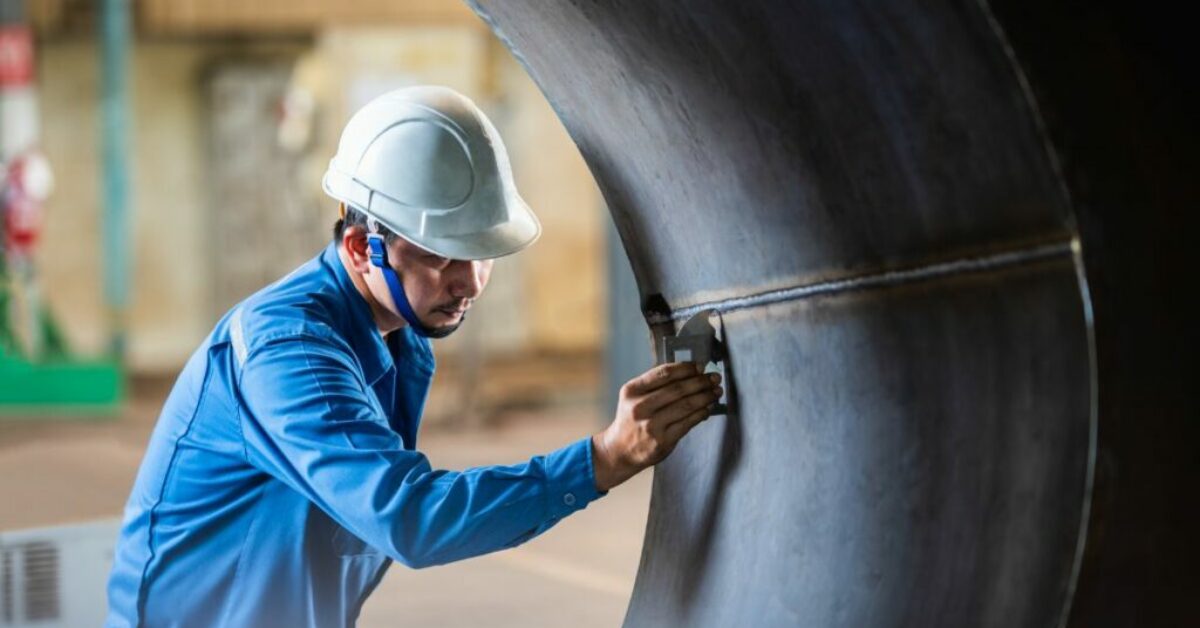Recognizing the Importance of Welding Assessment in Ensuring Structural Stability
Welding evaluation plays a crucial role in preserving structural honesty within the construction market, acting as a crucial secure versus potential failures. By methodically determining common problems-- such as porosity and insufficient blend-- inspections not only maintain top quality standards but likewise make sure compliance with safety and security laws. The implications of ignoring this crucial procedure extend beyond immediate safety problems, affecting both the longevity of structures and the overall track record of companies. As we check out the numerous examination strategies and their benefits, the question emerges: what are truth prices of overlooking this vital aspect of construction?
Duty of Welding in Building And Construction

Along with architectural applications, welding is indispensable in the fabrication of both large-scale and elaborate components. It allows for the personalization of components, allowing engineers and designers to bring their layouts to fulfillment. The versatility of welding techniques, including MIG, TIG, and arc welding, enables the effective joining of different materials and thicknesses, accommodating specific project requirements.
In addition, the advancement of welding technologies has led to improved performance and accuracy in building and construction procedures. Automated welding systems improve efficiency while decreasing human error, thereby promoting higher quality end results. The role of welding in building and construction expands past mere setting up; it is an important element in ensuring the safety and security, longevity, and general integrity of structures, underscoring its value in the contemporary construction landscape.
Usual Welding Problems
The stability of bonded structures is dramatically influenced by the visibility of problems that can endanger their performance and security. Usual welding defects include porosity, insufficient fusion, undercutting, and slag incorporations, each of which can seriously impact the general strength and longevity of welded joints.
Porosity takes place when gas bubbles are entraped in the weld steel, leading to decreased tensile strength. Incomplete fusion arises when the weld metal does not properly bond with the base metal, resulting in weak joints vulnerable to failing.
Various other defects, such as extreme spatter and misalignment, can additionally contribute to structural weaknesses. Identifying and dealing with these problems during the welding process is essential to guarantee the reliability of the final structure. Awareness of these common welding defects is essential for examiners and engineers to maintain the integrity of bonded frameworks and guarantee lasting security and performance.
Benefits of Welding Examination
Making certain the stability of welded frameworks depends heavily on the performance of welding examination processes. The main benefit of welding assessment is the early detection of prospective defects, which can significantly lower the danger of disastrous failures. By recognizing problems such as cracks, insufficient combination, or porosity before they intensify, inspection procedures assist keep the security and reliability of structures.
Moreover, welding assessment enhances conformity with industry criteria and regulations. Following these requirements is critical for ensuring and staying clear of legal consequences that Continued tasks satisfy essential safety procedures. This conformity also cultivates a society of quality guarantee, advertising best methods amongst welding personnel.
Furthermore, routine inspection can result in set you back financial savings in time. By alleviating the possibility of rework or repairs as a result of welding defects, companies can allocate resources a lot more successfully, ultimately enhancing performance.

Evaluation Techniques and Criteria
Reliable assessment techniques and requirements are necessary components of preserving the stability of welded frameworks. These methodologies make certain that welds are carried out appropriately and satisfy the required requirements, consequently minimizing the risk of structural failure. Common examination techniques include visual examination, ultrasonic testing, radiographic testing, and magnetic bit testing. Each method has its distinct benefits and applications, relying on the particular demands of the job.
Aesthetic evaluation is frequently the very first step, allowing examiners to recognize surface area flaws such as splits or improper bead forms. Ultrasonic testing utilizes high-frequency audio waves to identify inner flaws, while radiographic testing makes use of X-rays or gamma rays to reveal covert inconsistencies within the weld. Magnetic fragment testing works for finding surface area and near-surface problems in ferromagnetic products.
Standards play an important role in guiding these evaluation processes, with organizations such as the American Welding Culture (AWS) and the International Organization for Standardization (ISO) offering thorough standards. Conformity with these requirements not only makes certain the quality of welds however likewise cultivates trust amongst stakeholders in the architectural honesty of the completed item. Adhering to well established inspection techniques and requirements is essential to accomplishing resilient and reputable welded frameworks.
Regulatory Compliance and Safety
Governing conformity is important for safeguarding the security and honesty of bonded structures. Complying with well established codes and requirements, such as those set by the American Welding Culture (AWS) and the American National Criteria Institute (ANSI), ensures that welding techniques satisfy stringent safety and security and high quality needs. These laws are made to avoid failures that might result in devastating incidents, injuries, or death.
Compliance with these guidelines involves normal evaluations and assessments throughout the welding procedure. Qualified examiners review welds for adherence, toughness, and top quality to specs, guaranteeing that any type of variances are promptly addressed. This her response proactive approach not just enhances the structural honesty of welded parts but also mitigates risks linked with non-compliance.
In addition, my website governing bodies usually need documentation of evaluations and compliance records, which function as legal proof of adherence to safety requirements. Business that prioritize governing compliance not only safeguard their labor force and customers yet additionally enhance their credibility within the market. Inevitably, understanding and applying these regulations is essential for any type of organization aiming to preserve high security requirements and accomplish long-lasting operational success in welding methods.
Final Thought
In verdict, welding assessment plays an important function in maintaining architectural stability within the construction sector. Eventually, a dedication to extensive welding inspection is crucial for protecting both the labor force and the stability of created structures.
The convenience of welding techniques, consisting of MIG, TIG, and arc welding, allows for the reliable joining of various materials and thicknesses, providing to particular task requirements.
Making sure the integrity of welded frameworks relies heavily on the efficiency of welding inspection processes (Welding Inspection Milwaukee). In recap, the benefits of welding evaluation are complex, essential for making sure structural integrity and functional quality

Sticking to recognized codes and requirements, such as those set by the American Welding Culture (AWS) and the American National Requirement Institute (ANSI), ensures that welding methods satisfy rigid safety and security and quality requirements. Ultimately, a commitment to extensive welding assessment is crucial for guarding both the labor force and the integrity of constructed frameworks.